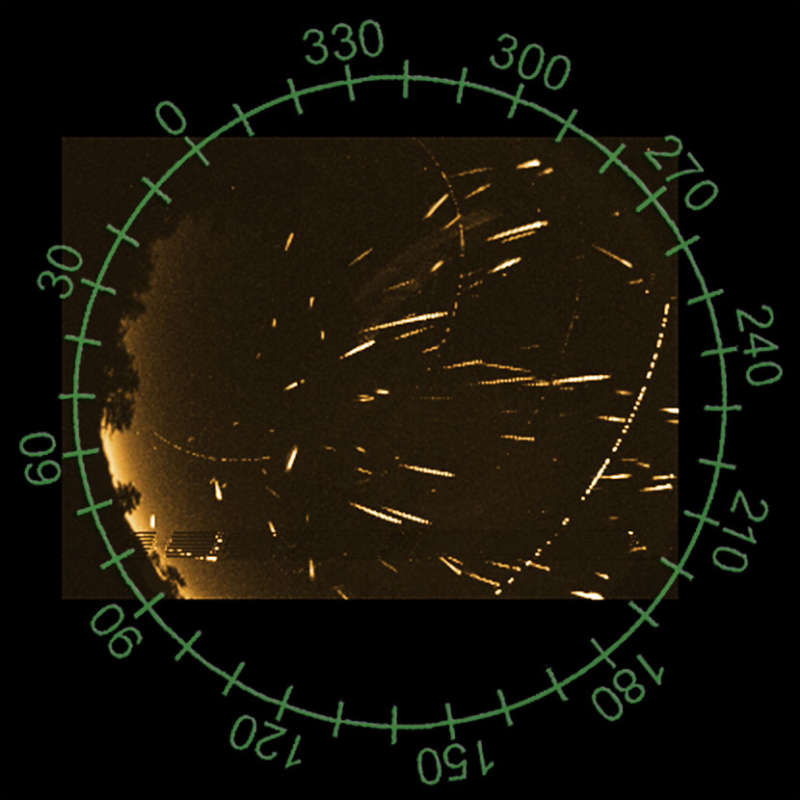
|
Credit & Copyright: Chris Peterson
(Cloudbait Observatory)
Explanation:
Where are all of these meteors coming from?
In terms of direction on the sky, the pointed answer is the
constellation
of Perseus.
That is why the last week's meteor shower was known as the
Perseids -- the meteors all appear to come from a
radiant toward Perseus.
Three dimensionally, however,
sand-sized debris
expelled from Comet Swift-Tuttle
follows a well-defined orbit about our Sun, and the part of the orbit that approaches
Earth is superposed in front of the Perseus.
Therefore, when Earth crosses this orbit, the
radiant point of falling debris appears in Perseus.
Pictured above, a
composite image of this year's
Pereids meteor shower shows many
bright meteors that
streaked
through the sky on August 12.
To the surprise of many, the next night, August 13, also showed
many meteors, as demonstrated by rolling one's cursor over the above image.
This year's
Leonids meteor shower
in November is
expected by some to be exceptionally active,
perhaps producing as many as 500 meteors per hour.
|
January February March April May June July August September October November December |
| |||||||||||||||||||||||||||||||||||||||||||||||||||||||
NASA Web Site Statements, Warnings, and Disclaimers
NASA Official: Jay Norris. Specific rights apply.
A service of: LHEA at NASA / GSFC
& Michigan Tech. U.
Based on Astronomy Picture
Of the Day
Publications with keywords: Perseids - meteor shower
Publications with words: Perseids - meteor shower
See also:
- APOD: 2025 August 21 Á Mostly Perseids
- APOD: 2025 August 20 Á Perseid Meteors from Durdle Door
- APOD: 2025 August 12 Á Perseids from Perseus
- APOD: 2025 August 3 Á Milky Way and Exploding Meteor
- APOD: 2024 December 10 Á The Great Meteor Storm of 1833
- APOD: 2024 August 12 Á Perseid Meteors over Stonehenge
- APOD: 2024 August 11 Á Animation: Perseid Meteor Shower
